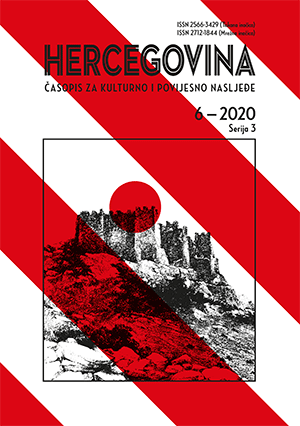Ikonografska analiza motiva križa na stećcima
Iconographic analysis of the cross motif on stecaks
Author(s): Gorčin DizdarSubject(s): Archaeology, Cultural history, Middle Ages
Published by: Filozofski fakultet Sveučilišta u Mostaru - Studij povijesti i Hrvatski institut za povijest - Zagreb
Keywords: cross; iconography; Bosnian Church; heterodoxy; Docetism; interconfessionality;
Summary/Abstract: According to the iconographic methodology developed by Erwin Panofsky, every piece of art has three levels of meaning: primarily or natural, secondary or conventional and tertiary or symbolic. Relying on the mentioned methodology, this article analyzes possible meanings of the cross motif on stecaks. Firstly, it shows on the basis of numerous Byzantine and Latin theological texts that presence of cross on stecaks does not necessarily have to mean that these monuments do not have any connection with the so called dualistic neo-Manichaean interpretations of the Christian religion that were attributed to the Bosnian Church. Namely, as the analyzed texts show, members of the so called dualist movements (Paulicians, Bogomils, Patarenes, Cathars) were mostly against the custom of veneration (veneratio) and adoration (adoratio) of the material representation of Christ's crucifixion and not against using the cross as such. Distinction between veneration / adoration of the cross and symbolic usage of this motif in the case of Byzantine Paulicians was based also on two different perceptions of Christ's nature: Chalcedon (Orthodox), according to which Jesus Christ had both human and divine nature and Docetic, according to which he did not have a true human body. With regard to complete lack of depiction of crucifixion on stecaks, iconography of the cross on stecaks could be based on Docetic Christology, but without adequate written sources this possibility cannot be confirmed. More detailed analysis of different types of crosses on stecaks and their theological background, however, shows that this motif was most likely understood in accordance to mystical understanding of this symbol which we find with early Christian theologians such as Justin Martyr, rather than in accordance to medieval orthodoxy of the Eastern Orthodox and Roman Catholic Church. Taking into consideration that archaeological finds show that stecaks were used not only by members of the Bosnian Church but also by Orthodox Christians and Catholics, the article proposed abandonment of religious affiliation as the primary category through which stecaks iconography is usually analyzed.
Journal: Hercegovina. Časopis za kulturno i povijesno naslijeđe (od 2018)
- Issue Year: 2020
- Issue No: 6
- Page Range: 123-140
- Page Count: 18
- Language: Bosnian

